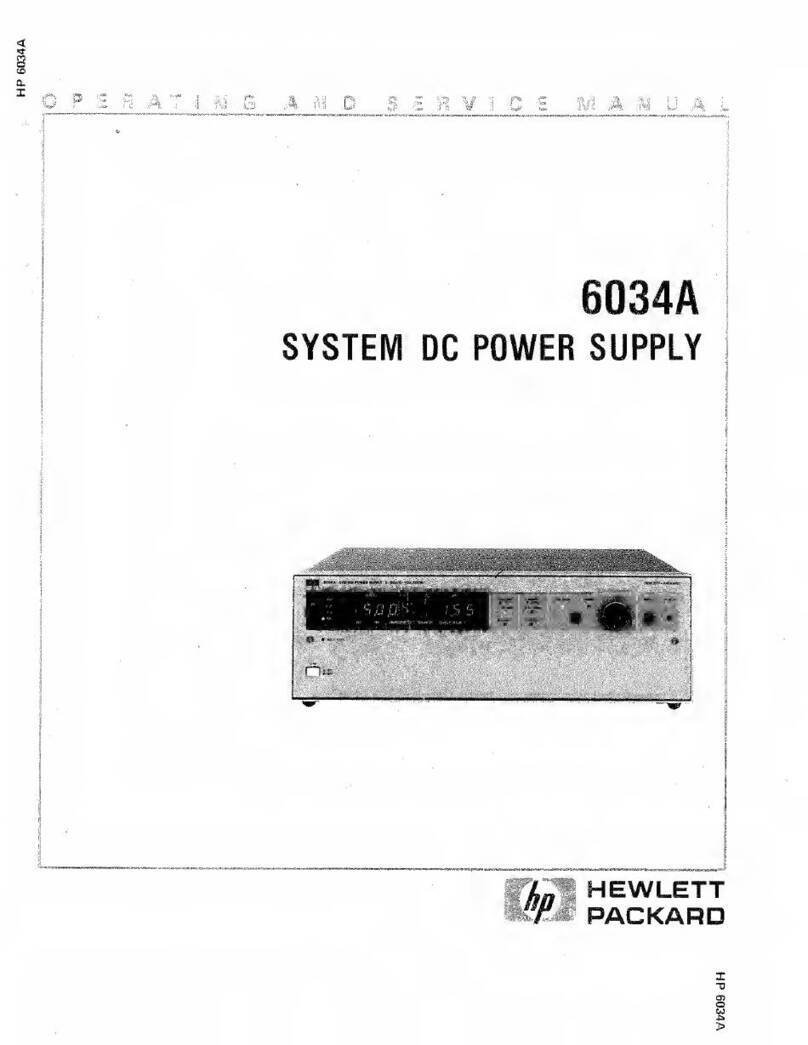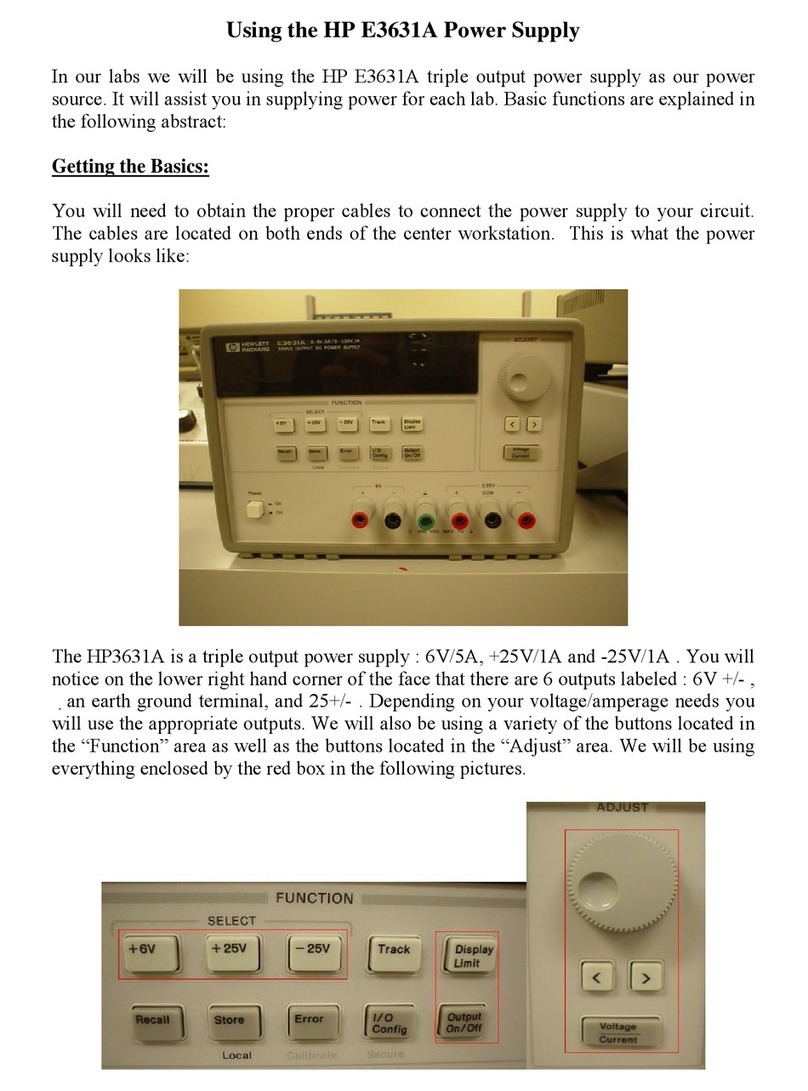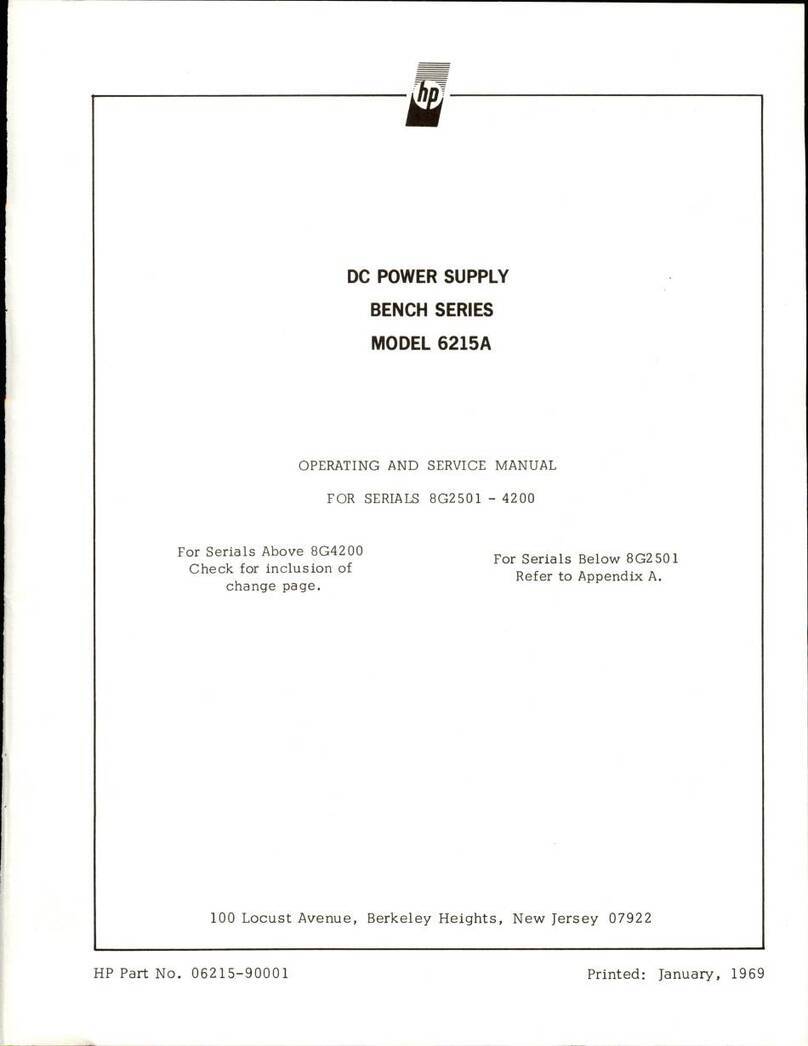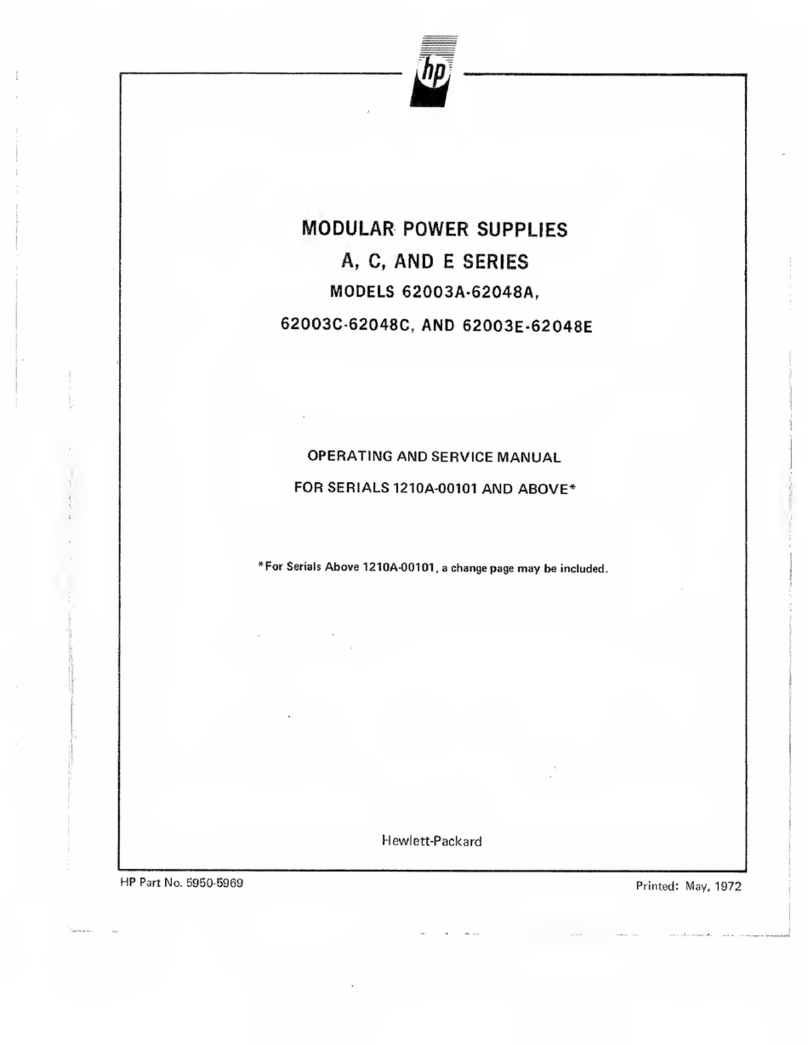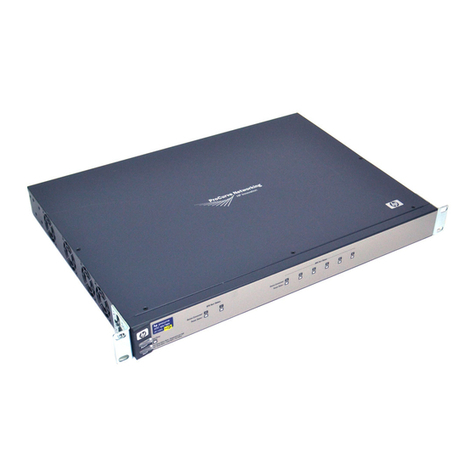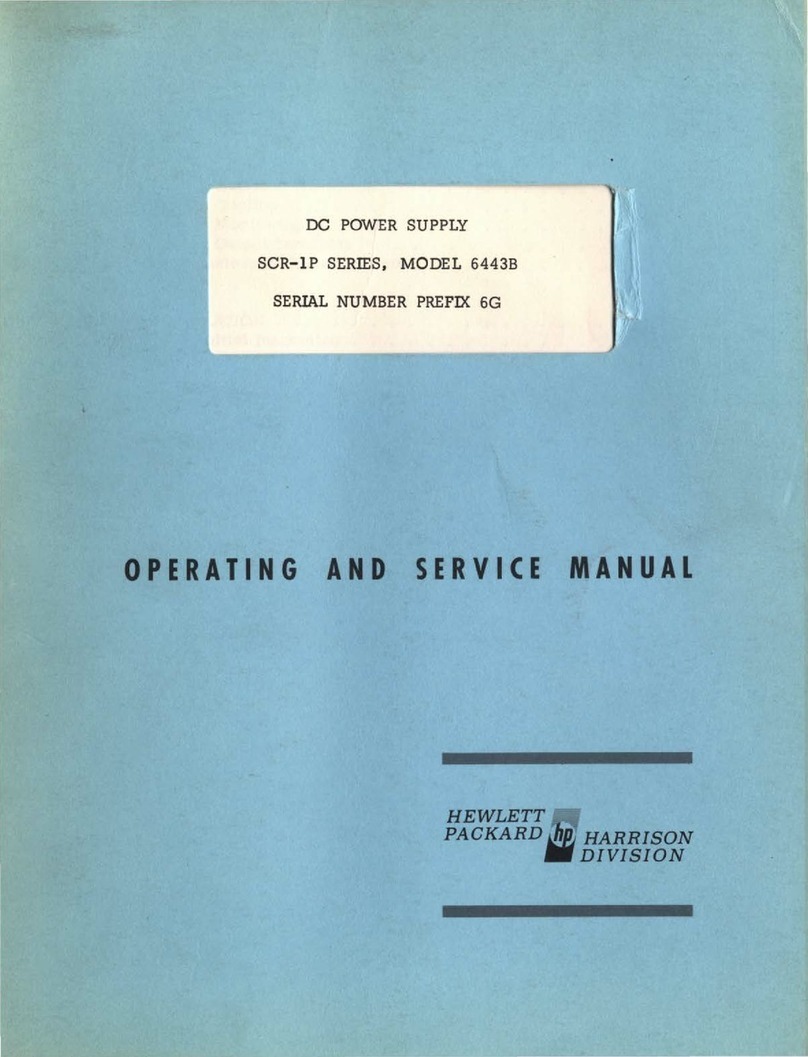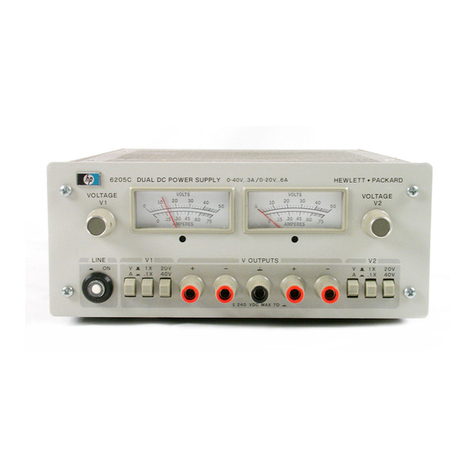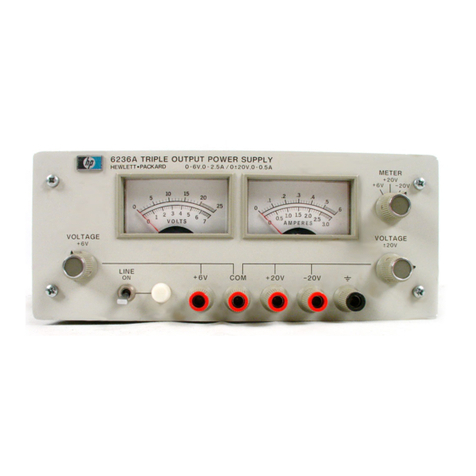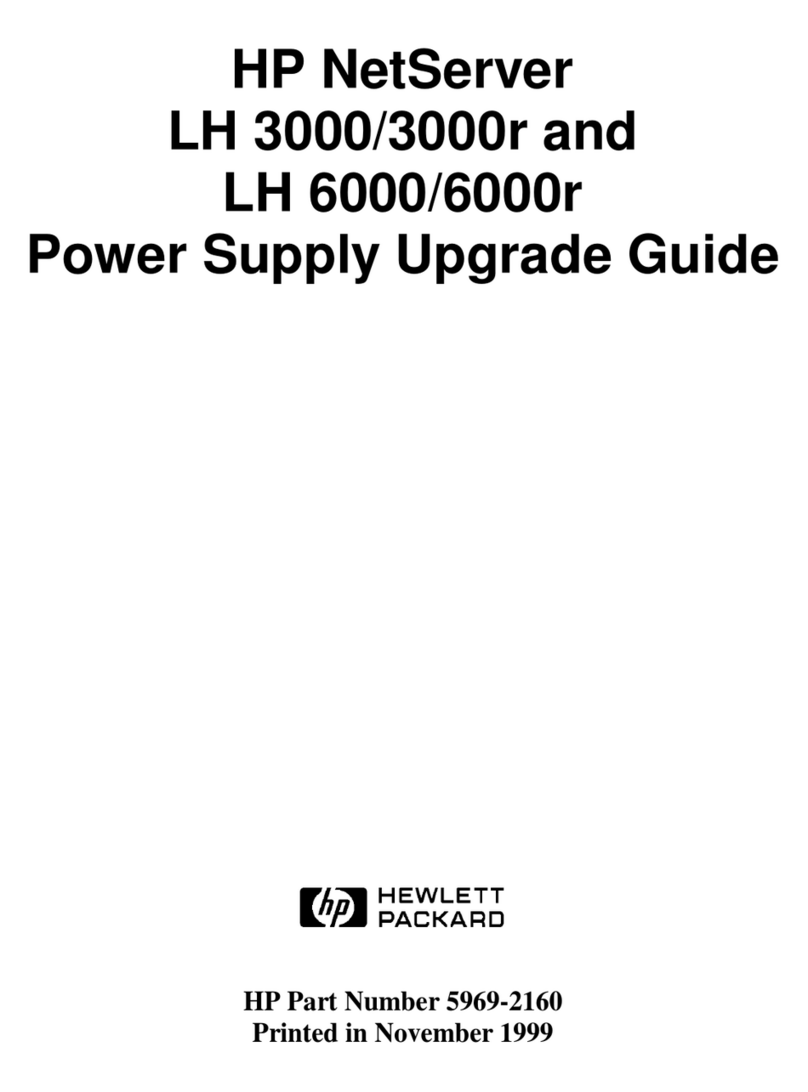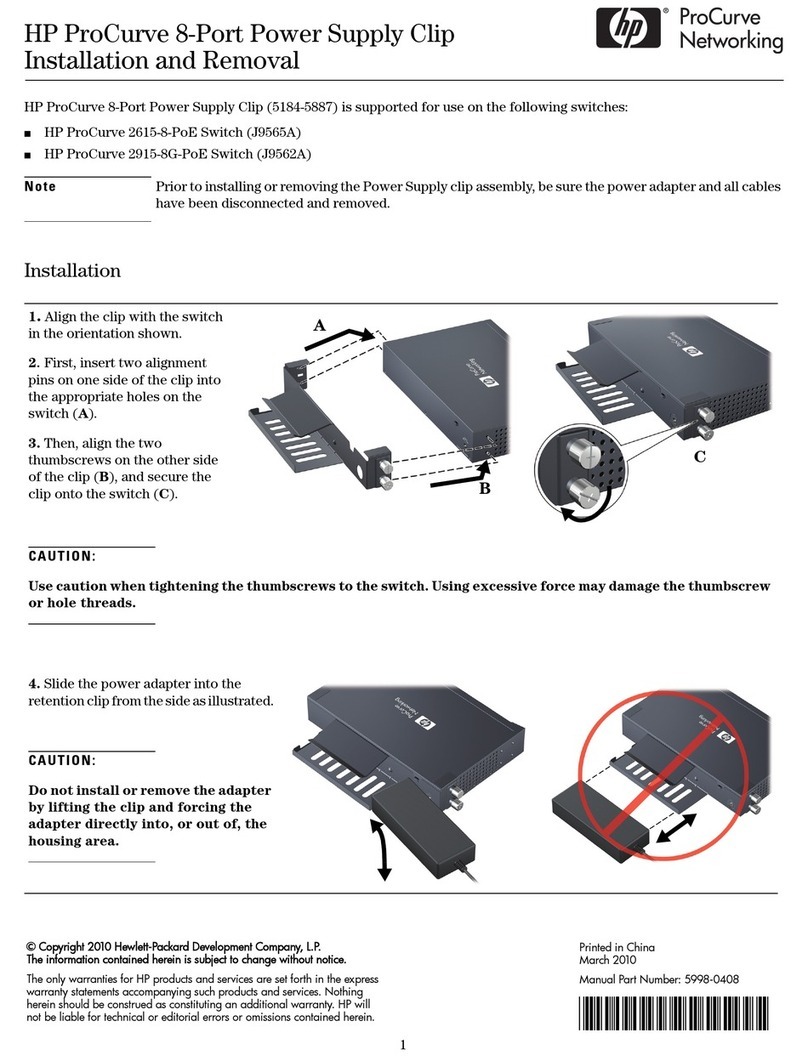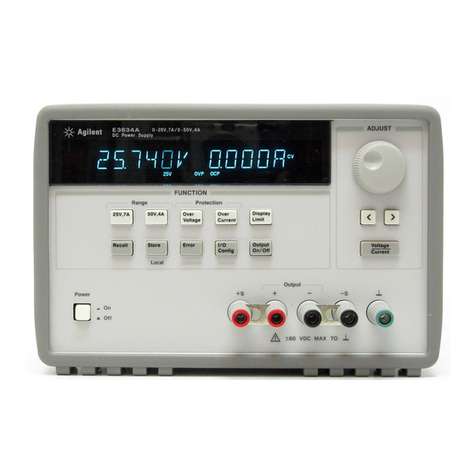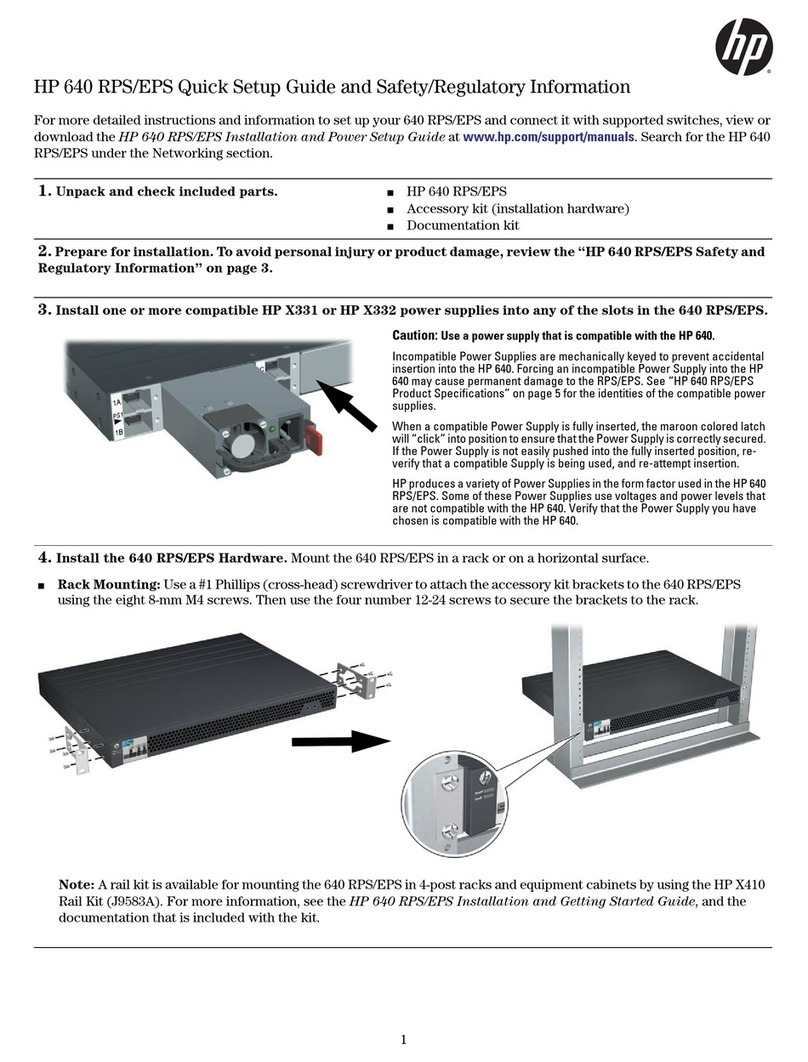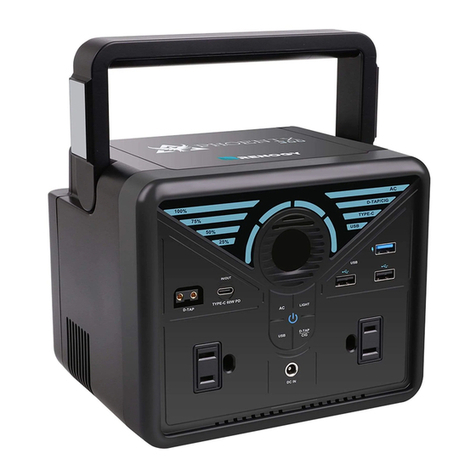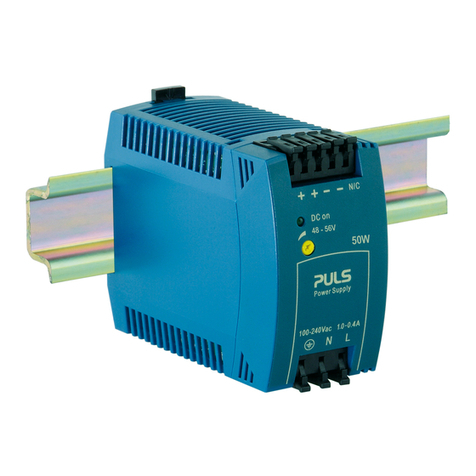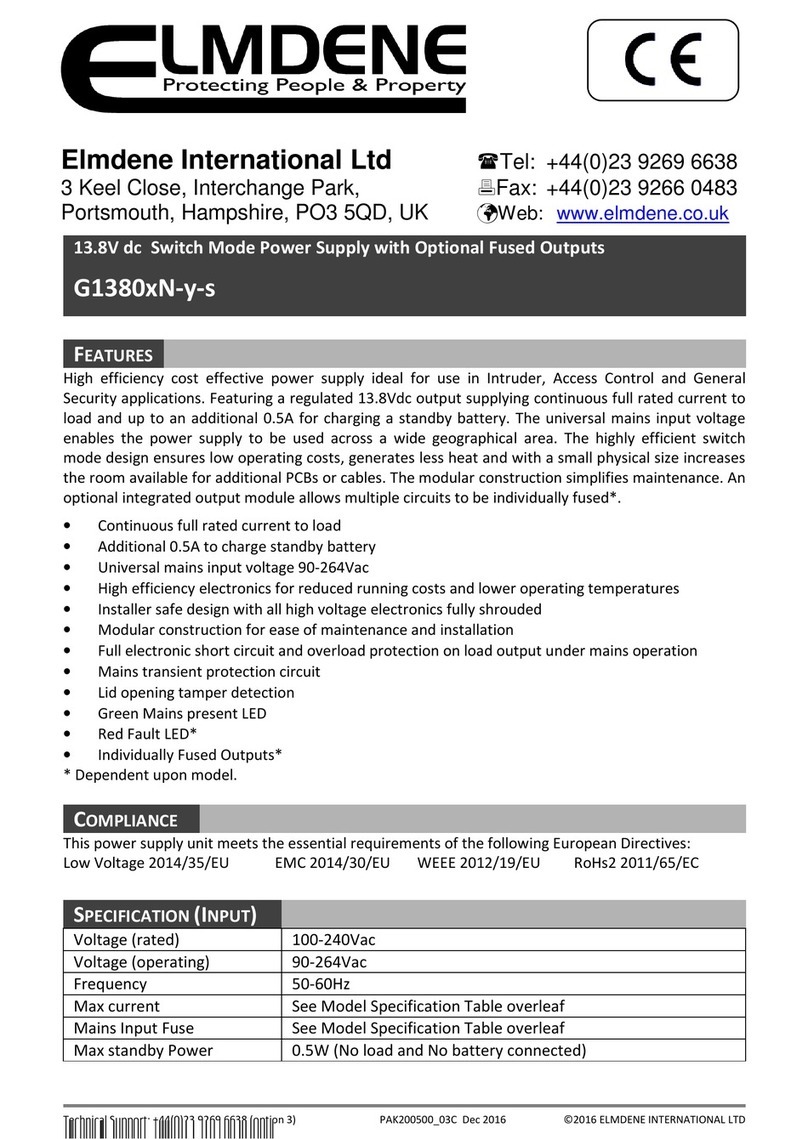Model
6960
A
1-1 Introduction
SECTION I
GENERAL INFORMATION
Section
I
1-2
This
is
on
operoting
and
service
manual far the Madel 6960 A
DC
Power
Supply.
This manual
is
applicable
only to instruments with the prefix number shown on
the
title
page
except
as modified
by
change
sheets.
1-3
Instrument
Identification
1-4
Hewlett-Packard
instruments use a
two-section,
eight-cligit
serial
number,
that
is,
000-00000.
The first
three
digits
are
an
identification
number;
the
last five
digits
are
the instrument
serial
number.
If
the
identification
number on the
instru-
ment daes not
agree
with
the
identification
number shown on
the
manual
title
page,
there
are
differences
between
the manual and instrument. These
differences
are
described
in
manuol
chonge
sheets having the prooer
identificotion
number.
1-5
General
Decription
1-6
The
-hp-
Model 6960A
DC
power supply produces a
regulated
DC
voltage
conti-
nuously
adjustable
from 0to 36 Vup to a
current
of
300 rnA, or from 0to
18
Vup
to a
current
of
600
rnA,
according
to
which
range
has
been
selected
by means
of
the
front
panel
push
buttons.
The supply makes load
circuit
performance
idepencient
of
external
power supply
influences,
has
very
low source
impedance
and
excellent
regulation
against
change
in
line
and
load.
This supply
is
especially
useful as asource
of
power for transistor
circuits
because
it
features
a
protective
circuit
which
electronically
li;"its
the
maximvm
OUTput
Fig.
1-1 Model 6960A Power Supply
1-1
~i:;;;mmmmmmm:::::::;;;:mmmmmmmm;mmmm;mmm;;m;;m;;
mmmmm;;;,
::i::,Fmm;;mmmm;""""""",,,
:;""",,,,,''': ""'H':::;:.;;'.::;::;:"m:;;';;';';;';;::"':;;';;;1:::::::::::::""="'"''''''"''''
"","'""",=:::,::":::::"',,,,,,::,,,,,,
,,,,,,,,,,,,,,,,,,,,,,,,,,,,,,,,,,,,,,,,,,,,,,,,,,,,,,,,,,,,,,,,,l!I1Iil
